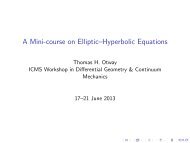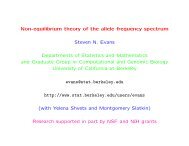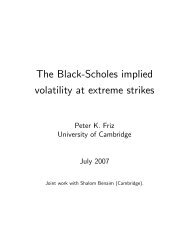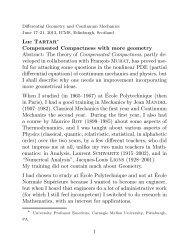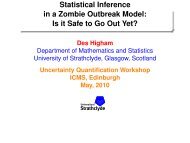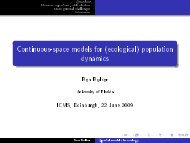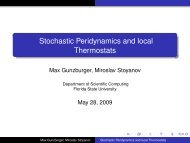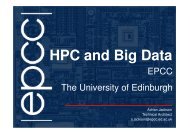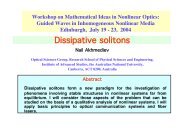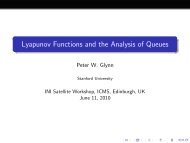1. Introduction We are going to investigate the equation ut(t, x ... - ICMS
1. Introduction We are going to investigate the equation ut(t, x ... - ICMS
1. Introduction We are going to investigate the equation ut(t, x ... - ICMS
- No tags were found...
Create successful ePaper yourself
Turn your PDF publications into a flip-book with our unique Google optimized e-Paper software.
8The following corollary of Theorem 2.2 is obtained by odd continuation of <strong>the</strong> functionsinvolved.Corollary 2.3. All assertions of Theorem 2.2 hold true for γ =0if we replace R dwith R d + everywhere, assume that a 1j ≡ 0 for j =2, ..., d, and supplement <strong>equation</strong>(<strong>1.</strong>1) with zero boundary condition at x 1 =0.To prove Theorem 2.1, we use <strong>the</strong> following Banach space version of <strong>the</strong> Calderón-Zygmund <strong>the</strong>orem. This a standard result which is discussed, for instance, in Chapter1 of [10] and can be extracted from more general results of [1]. For a Hilbert spaceversion of this <strong>the</strong>orem in <strong>the</strong> form of multipliers along with a version of Theorem 2.1for q = p and different opera<strong>to</strong>rs L we refer <strong>the</strong> reader <strong>to</strong> [9].Theorem 2.4. Let F and G be Banach spaces, p ∈ (1, ∞), and A : L p (R n ,F) →L p (R n ,G) be a linear bounded opera<strong>to</strong>r. Assume that if a bounded strongly measurableF -valued function f has compact support Γ, <strong>the</strong>n, for almost any x ∉ Γ, wehave∫Af(x) = K(x, y)f(y) dy,R n




